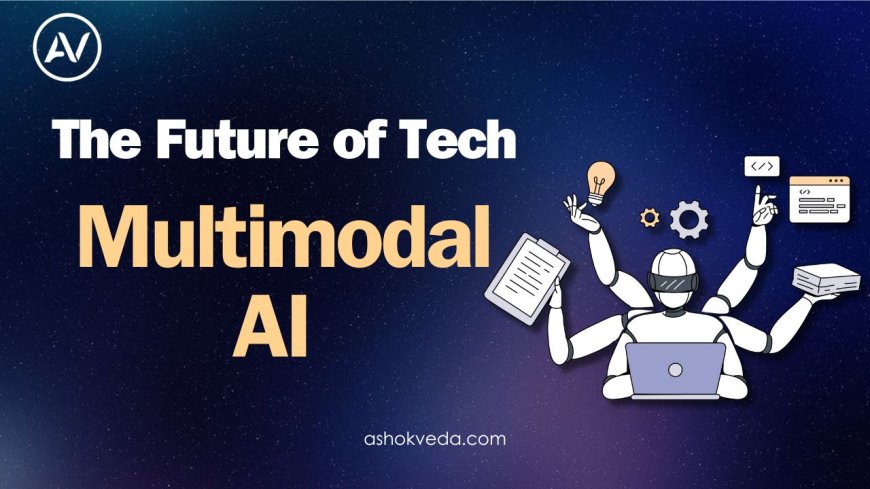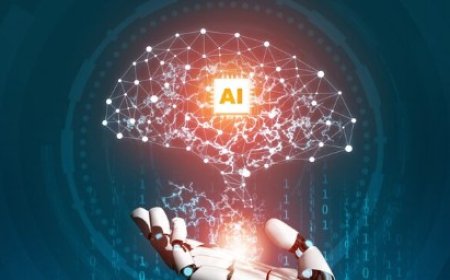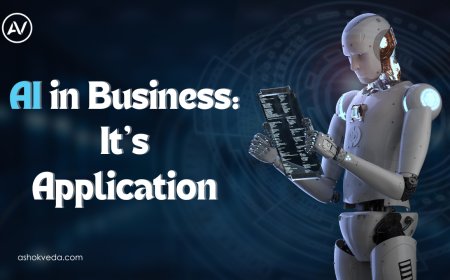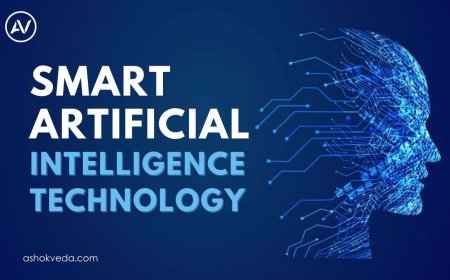How Multimodal AI is Changing Technology
Learn how multimodal AI is transforming various technological fields by integrating diverse data types for improved performance.

Hey, Have you heard about multimodal AI? If not, prepare yourself Multimodal AI is making an impact in the tech industry. Learn more about what it is and how it's changing technology. Understanding Multimodal AI is important for anyone interested in Machine Learning, artificial intelligence, or Natural Language Processing (NLP) to study this exciting technology together.
What is multimodal AI?
Multimodal AI refers to Artificial Intelligence systems that can process and integrate many forms of data at once. This contains text, photos, audio, and video. By combining these many data modalities, Multimodal AI may better grasp the context and make more educated decisions. Imagine an artificial intelligence that can assess a photo, read the accompanying text, and listen to proper audio all at the same time! That is the power of multimodal AI.
Why is multimodal AI important?
-
Improved Understanding: Multimodal AI understands context and nuances better than single-modality systems. For example, a captioned photo can be perceived more properly than just the image or words.
-
Improved User Experience: Combining different data types results in more interactive and of intuitive user interfaces. Consider virtual assistants that can see and hear you, resulting in more accurate responses.
-
Advanced Applications: Multimodal AI enables new applications in healthcare, education, and entertainment. For example, in healthcare, AI may evaluate medical imaging and patient information simultaneously to improve diagnosis.
Setting the Stage: Machine Learning and AI
Before we get into Multimodal AI, machine learning and AI, Machine learning is a subfield of artificial intelligence in which algorithms are trained to learn from and predict data. AI, in a larger sense, refers to machines' ability to execute tasks that normally require human intelligence. Machine learning and artificial intelligence are both key technologies for the development of Multimodal AI.
The Role of Natural Language Processing (NLP)
Natural language processing (NLP) is another important aspect of multimodal AI. NLP allows machines to read and process human language, resulting in more natural interactions with AI. When paired with other data kinds such as visuals and audio, NLP improves the AI's ability to understand and respond.
How Multimodal AI is Transforming Technology
1. Smarter Virtual Assistants
Multimodal AI helps virtual assistants such as Siri, Alexa, and Google Assistant to become smarter. These assistants can now handle voice instructions, recognize faces, and read text, resulting in more smooth and intuitive interactions. For example, you could ask your assistant to show you images from your previous vacation while you talk about them. This integration of diverse data kinds improves virtual assistant efficiency and usability.
2. Advanced Healthcare Solutions
In healthcare, multimodal AI is transforming diagnosis and treatment planning. AI systems may jointly assess medical imaging, patient histories, and genetic data, resulting in more accurate diagnoses and individualized treatment strategies. This integration helps clinicians to make more informed judgments, hence improving patient outcomes. These AI systems can provide a comprehensive perspective of patient health by utilizing machine learning and natural language processing (NLP)
3. Improved Educational Tools
Multimodal AI-powered educational systems can accommodate a variety of learning methods by combining text, graphics, and audio. For example, an AI tutor can help students understand complex concepts by providing explanations in the form of written information, illustrations, and spoken remarks. This method makes learning more entertaining and effective. Machine learning algorithms can be used to tailor learning experiences to the specific needs of individual students.
4. Improved customer service
Another area where Multimodal AI might help is in customer service. AI chatbots and virtual agents can handle client inquiries by text, speech, or even visual inputs. This multimodal capacity enables more precise and efficient responses, which improves customer satisfaction. For example, a client can upload a photo of a broken product while detailing the problem via chat, and the AI can combine the two inputs to suggest a solution. This usage of machine learning and NLP contributes to a better customer care experience.
5. Creative Industries
In the creative industries, Multimodal AI is pushing the envelope of what is possible. AI systems can now create music, art, and even stories by combining multiple data kinds. For example, an AI can assess a picture and create music that complements the atmosphere and style of the artwork. This cross-modal creation provides new opportunities for artists and creators. The combination of machine learning and NLP in these AI systems allows for new types of artistic expression.
Challenges and Considerations
While Multimodal AI provides many interesting customers, it also has challenges
1. Data Integration
Combining multiple data kinds seamlessly is difficult. Text, photos, audio, and video data must be precisely aligned and processed, which needs advanced algorithms and tremendous processing capacity. Machine learning models must be trained to handle this different data properly.
2. Privacy Concerns
Managing numerous data modalities poses privacy and security issues. For example, combining facial recognition with voice and text data can be distracting if not done correctly. It is critical to ensure that AI systems respect users' privacy and follow ethical norms. The implementation of safe machine learning practices is critical for protecting user data.
3. Technical complexity
Creating multimodal AI systems is a technical challenge. It necessitates knowledge in a variety of domains, including machine learning, NLP, computer vision, and data science. Building and maintaining these systems requires significant resources and skill. The smooth integration of machine learning and NLP components is critical to effective implementation.
Future of Multimodal AI
The future of Multimodal AI is incredibly promising. As technology advances, we can expect even more sophisticated and capable AI systems. Here are some potential future developments
1. Seamless human interaction
Future AI systems will offer more natural and seamless interactions. Imagine an AI that can understand and respond to human emotions by analyzing facial expressions, tone of voice, and word choice. This level of understanding will make AI assistants feel more like human companions. The combination of machine learning and NLP will play an important role in achieving this level of interaction.
2. Improved Personalization
Multimodal AI will allow for highly personalized experiences. AI systems will adjust their replies and recommendations based on a thorough understanding of individuals' tastes and behaviours across multiple data modalities. This customization will be powered by powerful machine-learning algorithms that adapt to user preferences.
3. New Applications
We will see Multimodal AI used in new and interesting ways. From personalized healthcare solutions to immersive virtual reality experiences, the potential applications are numerous and diverse. For example, in virtual reality, AI may generate immersive worlds by combining visual, aural, and tactile input. The use of machine learning and NLP in these applications will improve their effectiveness and user experience.
Multimodal AI is changing the technological field in deep ways. Combining multiple sources of data increases knowledge, and user experiences, and offers up new opportunities in a variety of sectors. Whether you work in machine learning, AI, or NLP, understanding Multimodal AI is essential for remaining current in the ever-changing tech industry.





































